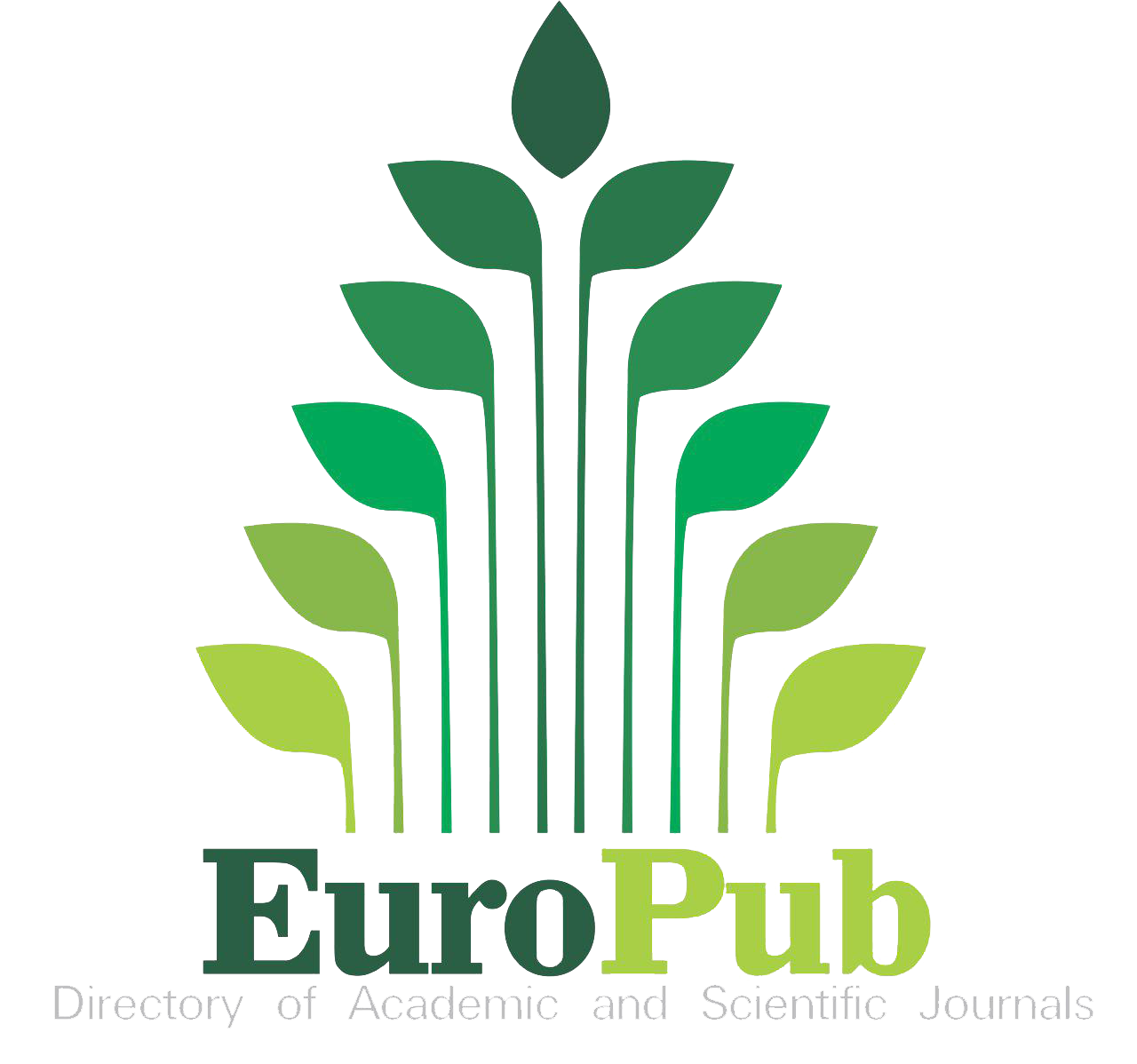Channels for Promoting Health Literacy on Family Planning Among Pregnant Women in Akheri Ward, Arumeru District
DOI:
https://doi.org/10.54536/ajahs.v4i1.4367Keywords:
Communication Channels, Community Health Workers, Family Planning, Health Literacy, Pregnant WomenAbstract
The study assessed the channels utilized to enhance family planning literacy among pregnant women in Akheri Ward, Arumeru District, Tanzania, between February and April 2024. The research focuses on hospital-registered pregnant women and employs a mixed-methods approach to address the central question of how family planning information is effectively disseminated. A total sample of 269 respondents was selected using a combination of probability and non-probability sampling techniques. Data collection involved structured interviews with key informants, including Reproductive and Child Health Officers, as well as questionnaires administered to the target population.The findings reveal that antenatal clinic mobilization by health professionals serves as the most effective channel for disseminating family planning information. This approach is particularly valued for fostering trust, offering personalized education, and facilitating informed decision-making among pregnant women. Social media platforms, especially WhatsApp groups, emerge as the second most effective channel, providing convenient access to information. Additionally, mass media, such as radio, plays a significant role in reaching broader and often remote populations. However, barriers such as limited internet access, inadequate digital literacy, and time constraints pose challenges to the efficacy of these channels, particularly in rural settings. The study underscores the critical importance of a multi-channel communication strategy to ensure comprehensive dissemination of family planning knowledge, particularly for underserved rural communities. Recommendations include increased investment in both traditional media, such as radio, and digital platforms to expand access and overcome infrastructural barriers. Furthermore, capacity-building initiatives for health professionals and community-based interventions are advocated to improve engagement and enhance maternal health outcomes. These findings contribute to the broader discourse on maternal health literacy, highlighting the need for context-specific, inclusive communication strategies in low-resource settings.
Downloads
References
Adaki, A. Y. (2023). Technology as a Catalyst for Change: Exploring the Transformative Impact of Technology on Women’s Attitudes Towards Family Planning Services in Ussa Local Government Area of Taraba State, Nigeria. Traditional Journal of Multidisciplinary Sciences, 1(02), 1–12.
Adaki, A. Y., & Nsofor, J. O. (2023). Uncovering The Barriers Faced by Women in Utilizing Family Planning Services : The Role of Social Stigma in Takum Local Government Area of Taraba State , Nigeria. International Journal of Current Researches in Sciences, Social Sciences and Languages, 3(3), 80–88.
Almasi, J., Athman, A. K., & Shausi, G. L. (2023). Small-Scale Chicken Farmers ’ Perceptions of Use of Social Media to Access Market Information in Arusha City , Tanzania. European Journal of Communication and Media Studies, 2(5), 21–30.
Almasi, J., Mwaseba, D. L., Athman, A. K., & Shausi, G. L. (2023). Small- Scale Chicken Farmers ’ Use of Social Media to Access Market Information in Arusha City , Tanzania. Asian Journal of Agricutural Extension, Economics and Sociology, 41(10), 1014–1027. https://doi.org/10.9734/AJAEES/2023/v41i102255
Benaiah, W. C., & Osuntoki, D. (2024). The Impact of Social Media on Political Mobilization in Nigeria: A Case Study of the Obidient Movement. American Journal of Arts and Human Science, 3(3), 228–238. https://doi.org/10.54536/ajahs.v3i3.3336
Brach, C., & Harris, L. M. (2021). Healthy People 2030 Health Literacy Definition Tells Organizations: Make Information and Services Easy to Find, Understand, and Use. Journal of General Internal Medicine, 36(4), 1084–1085. https://doi.org/10.1007/s11606-020-06384-y
Busse, T. S., Nitsche, J., Kernebeck, S., Jux, C., Weitz, J., Ehlers, J. P., & Bork, U. (2022). Approaches to Improvement of Digital Health Literacy (eHL) in the Context of Person-Centered Care. International Journal of Environmental Research and Public Health, 19(14), 1–11. https://doi.org/10.3390/ijerph19148309
Carroll, A., & Kapilashrami, A. (2020). Barriers to uptake of reproductive information and contraceptives in rural Tanzania: An intersectionality informed qualitative enquiry. BMJ Open, 10(10), 1–8. https://doi.org/10.1136/bmjopen-2019-036600
Chen, S. C., & Lin, C. P. (2019). Understanding the effect of social media marketing activities: The mediation of social identification, perceived value, and satisfaction. Technological Forecasting and Social Change, 140(7), 22–32. https://doi.org/10.1016/j.techfore.2018.11.025
Chukwuji, C. N., Tsaf, A. G., Sule, S., Yusuf, Z., & Zakarriya, J. (2018). Awareness, Access and Utilization of Family Planning Information in Zamfara State, Nigeria. Library Philosophy and Practice (e-Journal)., 4(48), 1–31.
de Silva, S., Jadhav, A., Fabic, M. S., Munthali, L., Oyedokun-Adebagbo, F., & Kebede, Z. (2024). Family Planning, Reproductive Health, and Progress Toward the Sustainable Development Goals: Reflections and Directions on the 30th Anniversary of the International Conference on Population and Development. Global Health, Science and Practice, 12(5), 1–9. https://doi.org/10.9745/GHSP-D-24-00127
DHS. (2021). Demographic and health survey – DHS 2021 (Issue January).
Ducray, J. F., Kell, C. M., Basdav, J., & Haffejee, F. (2021). Cervical cancer knowledge and screening uptake by marginalized population of women in inner-city Durban, South Africa: Insights into the need for increased health literacy. Women’s Health, 17(7), 1–10. https://doi.org/10.1177/17455065211047141
Fauser, B. C. J. M., Adamson, G. D., Boivin, J., Chambers, G. M., Dyer, S., de Geyter, C., Inhorn, M. C., Schmidt, L., Serour, G. I., Tarlatzis, B., & Zegers-Hochschild, F. (2024). Declining global fertility rates and the implications for family planning and family building: an IFFS consensus document based on a narrative review of the literature. Human Reproduction Update, 30(2), 153–173. https://doi.org/10.1093/humupd/dmad028
Glaister, C., Griggs, V., Martinez Gonzalez, O., & Hussain, M. (2023). Informal collaborative learning (ICL)–student perspectives on the role of informal collaborative learning ICL in higher education. Teaching in Higher Education, 29(8), 2025–2041. https://doi.org/10.1080/13562517.2023.2177843
Hall, J., Chawla, M., Watson, D., Jacob, C. M., Schoenaker, D., Connolly, A., Barrett, G., & Stephenson, J. (2023). Addressing reproductive health needs across the life course: an integrated, community-based model combining contraception and preconception care. The Lancet Public Health, 8(1), e76–e84. https://doi.org/10.1016/S2468-2667(22)00254-7
Harsch, S., Jawid, A., Jawid, E., Saboga-Nunes, L., Sørensen, K., Sahrai, D., & Bittlingmayer, U. H. (2021). Health Literacy and Health Behavior Among Women in Ghazni, Afghanistan. Frontiers in Public Health, 9(March), 1–13. https://doi.org/10.3389/fpubh.2021.629334
Hazra-Ganju, A., Dlima, S. D., Menezes, S. R., Ganju, A., & Mer, A. (2023). An omni-channel, outcomes-focused approach to scale digital health interventions in resource-limited populations: a case study. Frontiers in Digital Health, 5(August), 1–15. https://doi.org/10.3389/fdgth.2023.1007687
Houghton, N., Bascolo, E., Cohen, R. R., Lleny, N., Vilcarromero, C., Gonzalez, H. R., Albrecht, D., Koller, T. S., & Fitzgerald, J. (2023). Identifying access barriers faced by rural and dispersed communities to better address their needs implications and lessons learned for rural proofing for health in Americas and beyond. Rural and Remote Health, 23(1), 1–12.
Kabagenyi, A., Kakande, P., & Owayezu, V. (2019). Demand for family planning among poor women in Uganda: further analysis of the demographic and health surveys. In DHS Working Paper No. 152 (Issue August). https://www.dhsprogram.com/pubs/pdf/WP152/WP152.pdf
Kassim, M., & Ndumbaro, F. (2022). Factors affecting family planning literacy among women of childbearing age in the rural Lake zone, Tanzania. BMC Public Health, 22(1), 1–11. https://doi.org/10.1186/s12889-022-13103-1
Kilugwe, Z., & Ruheza, S. (2018). Access to Communication Channels and Use of Family Planning among Women in Tanzania: Spatial and Socio-demographic Analysis. Journal of Social and Development Sciences, 9(3), 55–65.
Kristiansen, D., Boyle, E. H., & Svec, J. (2023). The impact of local supply of popular contraceptives on women’s use of family planning: findings from performance-monitoring-for-action in seven sub-Saharan African countries. Reproductive Health, 20(1), 1–12. https://doi.org/10.1186/s12978-023-01708-7
Massenga, J., Noronha, R., Awadhi, B., Bishanga, D., Safari, O., Njonge, L., Kim, Y. M., Roosmalen, J. van, & Akker, T. van den. (2021). Family planning uptake in kagera and mara regions in tanzania: A cross-sectional community survey. International Journal of Environmental Research and Public Health, 18(4), 1–16. https://doi.org/10.3390/ijerph18041651
Mhina, J. A. (2024). Awareness of Family Planning Services among Pregnant Women in Arumeru District , Tanzania : Implications for Public Health Interventions. South Asian Journal of Social Studies and Economics, 21(11), 111–121.
Muscat, D. M., Shepherd, H. L., Nutbeam, D., Trevena, L., & McCaffery, K. J. (2021). Health Literacy and Shared Decision-making: Exploring the Relationship to Enable Meaningful Patient Engagement in Healthcare. Journal of General Internal Medicine, 36(2), 521–524. https://doi.org/10.1007/s11606-020-05912-0
Mushy, S. E., Tarimo, E. A. M., Fredrick Massae, A., & Horiuchi, S. (2020). Barriers to the uptake of modern family planning methods among female youth of Temeke District in Dar es Salaam, Tanzania: A qualitative study. Sexual and Reproductive Healthcare, 24(6), 1–6. https://doi.org/10.1016/j.srhc.2020.100499
Mwaikambo, L., Brittingham, S., Ohkubo, S., Salem, R., Sama, D. J., Sow, F., Mathur, D., & Anieto, N. N. (2021). Key factors to facilitate locally driven family planning programming: a qualitative analysis of urban stakeholder perspectives in Africa and Asia. Globalization and Health, 17(1), 1–12. https://doi.org/10.1186/s12992-021-00717-0
Of, H.-K. M. (2021). National Family Planning Guidelines for Service Providers.
Oyewole, J. A. (2024). The Social Media as Means for Self-Expression Against Social Injustice and Agigitation in Nigeria. American Journal of Arts and Human Science, 3(3), 94–100. https://doi.org/10.54536/ajahs.v3i3.2911
Potasse, M. A., & Yaya, S. (2021). Understanding perceived access barriers to contraception through an African feminist lens: a qualitative study in Uganda. BMC Public Health, 21(1), 1–13. file:///C:/Users/ACER/Downloads/s12889-021-10315-9.pdf
Puri, M. C., Moroni, M., Pearson, E., Pradhan, E., & Shah, I. H. (2020). Investigating the quality of family planning counselling as part of routine antenatal care and its effect on intended postpartum contraceptive method choice among women in Nepal. BMC Women’s Health, 20(1), 1–11. https://doi.org/10.1186/s12905-020-00904-y
Richardson, M. B., Toluhi, A. A., Baskin, M. L., Budhwani, H., Julian, Z. I., Knight, C. C., Sinkey, R., Szychowski, J. M., Tita, A. T. N., Wingate, M. S., & Turan, J. M. (2023). Community and Systems Contributors and Strategies to Reduce Racial Inequities in Maternal Health in the Deep South: Provider Perspectives. Health Equity, 7(1), 581–591. https://doi.org/10.1089/heq.2023.0114
Schuler, S. R., Rottach, E., & Mukiri, P. (2021). Gender norms and family planning decision-making in Tanzania: A qualitative study. Journal of Public Health in Africa, 2(2), 102–107. https://doi.org/10.4081/jphia.2011.e25
Sharma, V., De Beni, D., Sachs Robertson, A., & Maurizio, F. (2020). Why the Promotion of Family Planning Makes More Sense Now Than Ever Before? Journal of Health Management, 22(2), 206–214. https://doi.org/10.1177/0972063420935545
Sørensen, K., Levin-Zamir, D., Duong, T. V., Okan, O., Brasil, V. V., & Nutbeam, D. (2021). Building health literacy system capacity: a framework for health literate systems. Health Promotion International, 36(9), I13–I23. https://doi.org/10.1093/heapro/daab153
TDHS. (2022). Demographic and Health Survey and Malaria Indicator Survey. In Paper Knowledge . Toward a Media History of Documents.
UNFPA. (2022). A deadly gap: meeting the unmet need for reproductive health care. In UNFPA (Issue December). http://www.unfpa.org/sites/default/files/resource-pdf/EN-SRH fact sheet-DeadlyGap.pdf
Valencia, J. G. (2025). Examining the Role of Social Media and Mass Media in Political Campaigns : A Review of the Literature. American Journal of Arts and Human Science (AJAHS), 4(1), 1–7.
Yousef, H., Al-Sheyab, N., Al Nsour, M., Khader, Y., Al Kattan, M., Bardus, M., Alyahya, M., Taha, H., & Amiri, M. (2021). Perceptions toward the use of digital technology for enhancing family planning services: Focus group discussion with beneficiaries and key informative interview with midwives. Journal of Medical Internet Research, 23(7), 1–11. https://doi.org/10.2196/25947
Downloads
Published
How to Cite
Issue
Section
License
Copyright (c) 2025 Juma Almasi Mhina, Sara Mmari, Moh’d Juma Moh’d, Najma Salehe Amini, Zakia K. Msuya

This work is licensed under a Creative Commons Attribution 4.0 International License.








